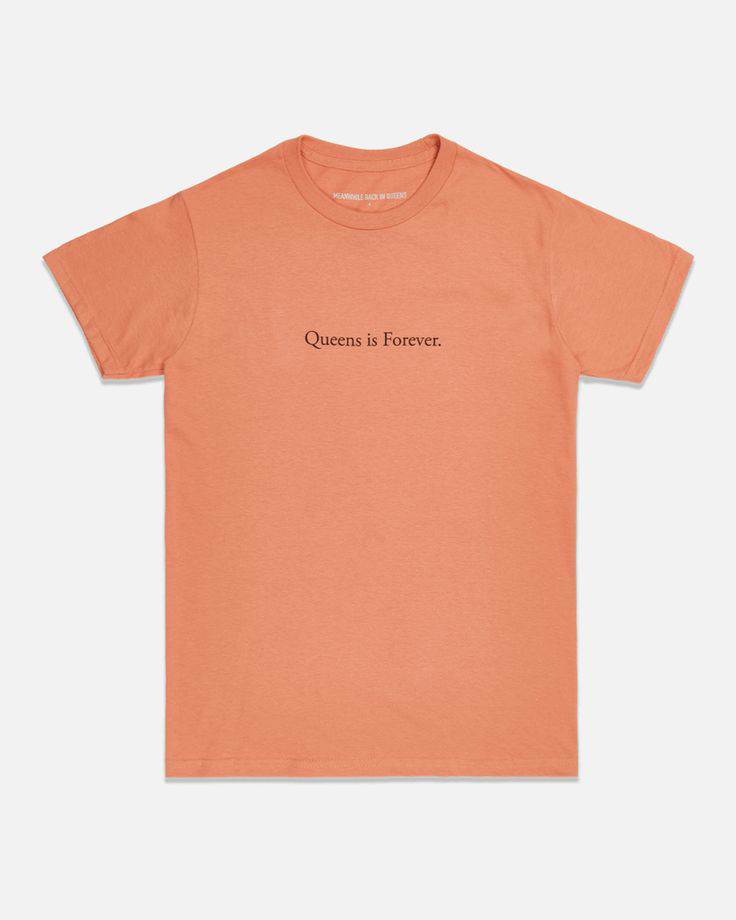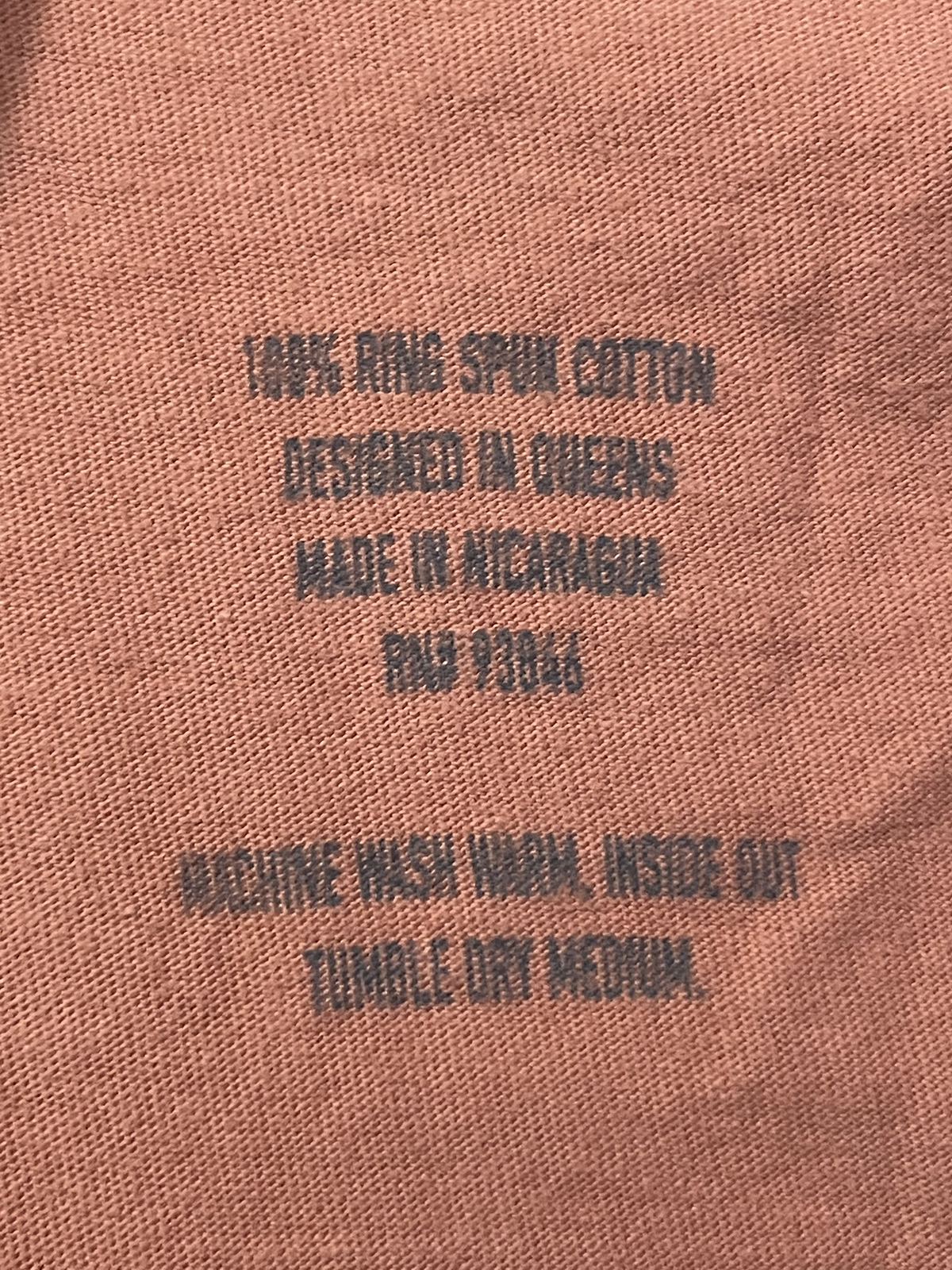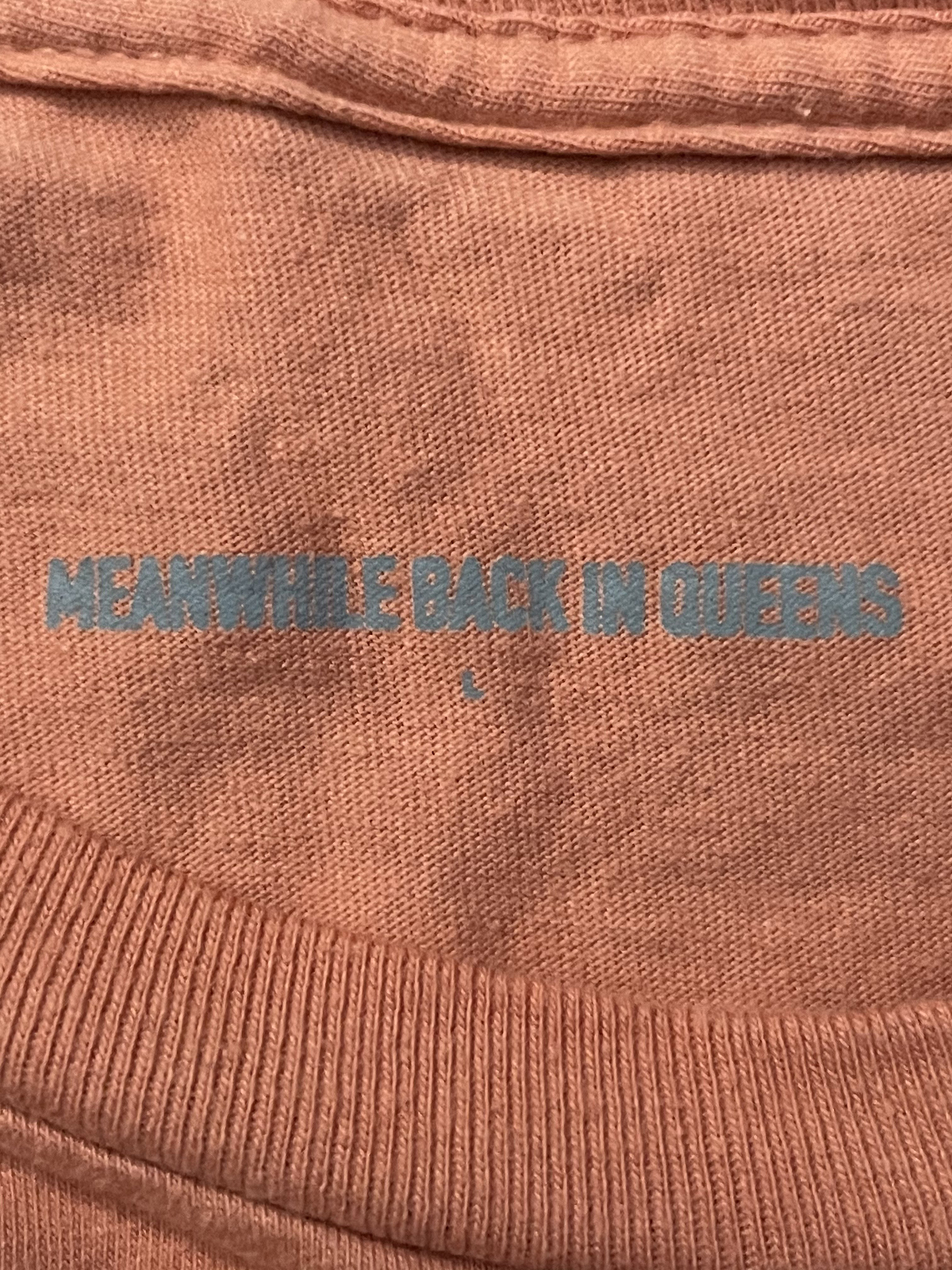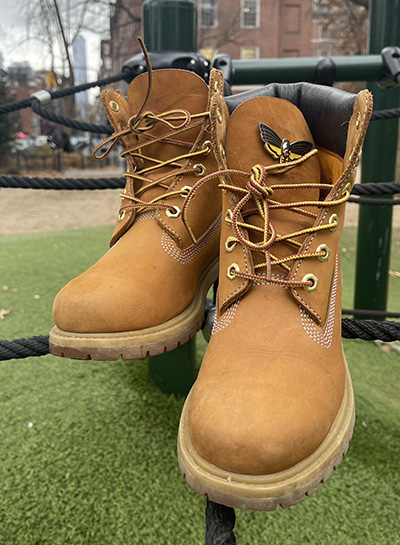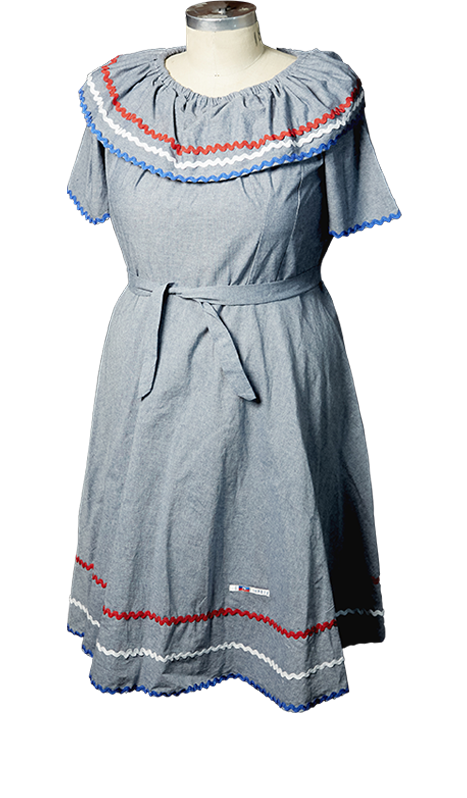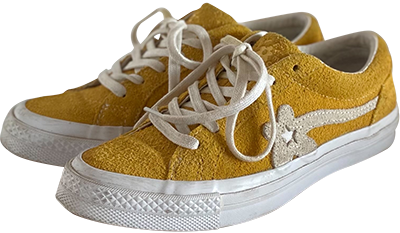Queens Shirt
ABOUT
A three-word homage to Queens–this 100% ring spun cotton blend shirt is as bold as it is resilient. Its pastel peach color and text is as minimalistic as can be. Derived from the streetwear brand, Meanwhile Back in Queens, this shirt along with many others in the capsule collection spotlights culture in New York City. References to sports teams and lottery tickets and train stations and ice cream trucks and Cafe Bustelo and bodegas can all be seen within the brand. Branding is hugely important to them too; this is a collective keenly aware of the stereotypes of Queens – its crime, its poverty, its ghettos and it spins all into a positive message for the few people in the know. Today, Queens is a beacon of hope where immigrants can come in and build a better life and a result of that is the great culture cultivated. No greater example is the Queens Night Market, an annual fair of food vendors from dozens of countries in the same park where the world’s fairs took place decades before it.
However, what happens when all the socializing comes to an end? When the pandemic started in early 2020, much of Queens’ economy that relied on chain stores, malls, restaurants, lounges and events was halted. During the all this turmoil, when night markets shut down, when the 7 train became eerily empty and kids stopped playing by the street pump to cool down, “Meanwhile Back In Queens” designed a sticker placed around vacant stores and closed up buildings that read “This is temporary, 𝗤𝘂𝗲𝗲𝗻𝘀 𝗶𝘀 𝗙𝗼𝗿𝗲𝘃𝗲𝗿.”
Before Flushing Meadows-Corona Park was ever a playground for kids and adults alike, before it was ever a tourist attraction known for its iconic 140-foot stainless steel Unisphere with water fountains encircling it and large trees clustering nearby, it was a rat infested ash dump. In the 1920s, novelist F. Scott Fitzgerald described it as “a fantastic farm where ashes grow like wheat into ridges and hills and grotesque gardens; where ashes take the forms of houses and chimneys.” Queens was a casualty of industrial waste coming from Manhattan, it was a borough that served as Manhattan’s garbage truck. Things radically changed after the construction of the Queensboro Bridge in 1901-1909 and the expansion of the Long Island Railroad shortly after. These developments led to an influx of people no longer bound by a ferry to get into Manhattan. By 1939, on the heels of the Great Depression, that same dump became the foundation of the first of two world’s fairs. Led by power broker and New York businessman Robert Moses, the second most expensive American fair of all time accommodated millions of people. Exhibitions promoted industry, science, art and food from countries all over the world. By 1964-1965, the world’s fair returned a second time, refreshed with hand-drawn Coca-Cola pamphlets and the bright colors of flags; limestone facades in all types of shapes and a giant monorail made to celebrate technological achievement. A Michelangelo sculpture was imported from the Vatican, an entire Belgian village was recreated, concept cars from automakers were displayed. In the center of the World’s Fair was that very Unisphere mentioned in the beginning. Like the Statue of Liberty of Queens, this monument still stands as a backdrop that celebrates diversity. Off the momentum of this fair, the Immigration and Nationality Act of 1965 created a path for non-Europeans to enter the country and NYC was never the same again. Over 55 years later, Queens is the most ethnically diverse urban area in the world.
—Label written by Ali Cruz
Listen to Audio
Click on Image to View Gallery
ORIGIN
Nicaragua
APPROXIMATE DATE
c. 2020/2021
MATERIALS
Cotton
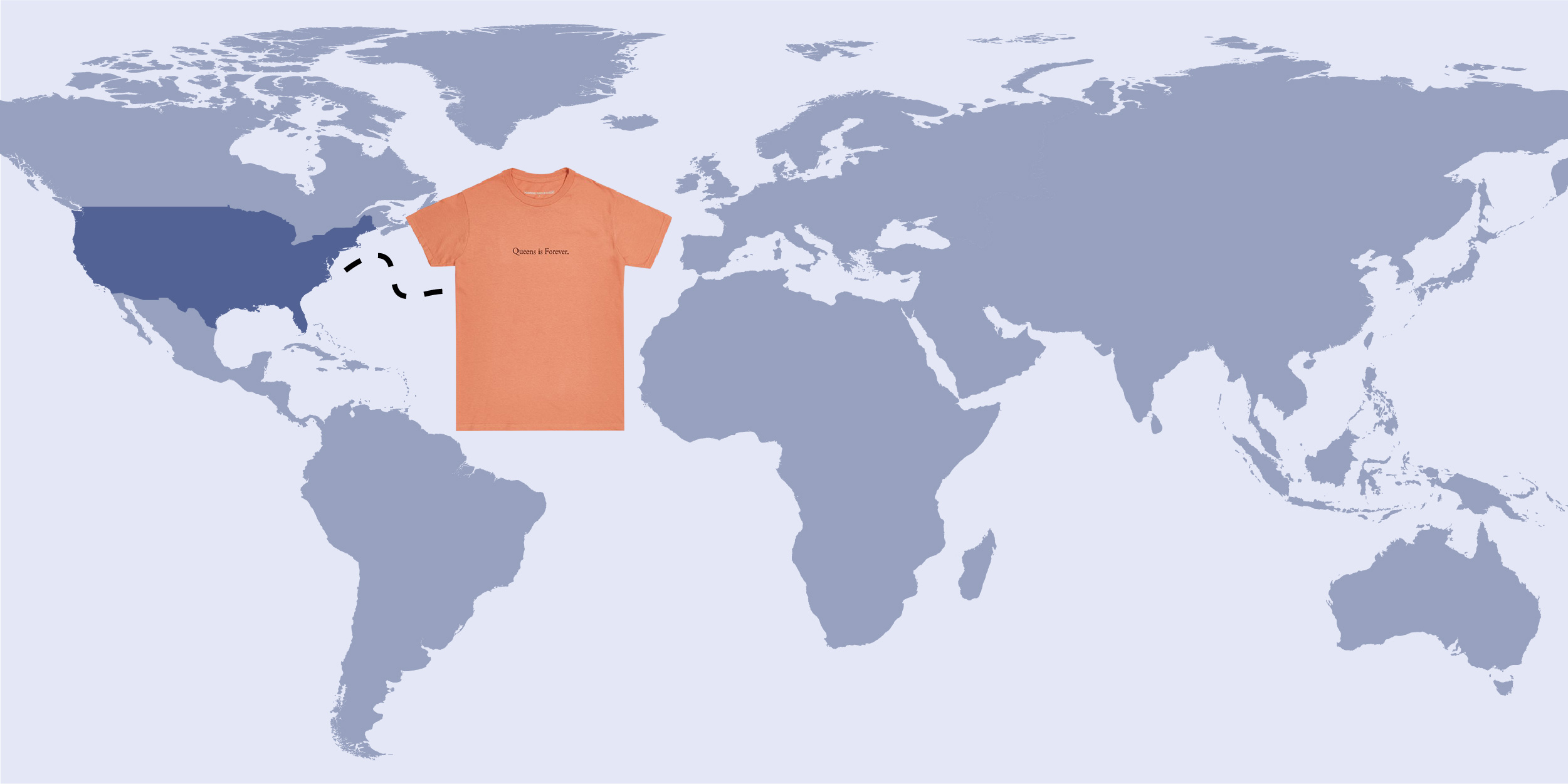
Queens Shirt
Click on Image to View Gallery
ABOUT
A three-word homage to Queens–this 100% ring spun cotton blend shirt is as bold as it is resilient. Its pastel peach color and text is as minimalistic as can be. Derived from the streetwear brand, Meanwhile Back in Queens, this shirt along with many others in the capsule collection spotlights culture in New York City. References to sports teams and lottery tickets and train stations and ice cream trucks and Cafe Bustelo and bodegas can all be seen within the brand. Branding is hugely important to them too; this is a collective keenly aware of the stereotypes of Queens – its crime, its poverty, its ghettos and it spins all into a positive message for the few people in the know. Today, Queens is a beacon of hope where immigrants can come in and build a better life and a result of that is the great culture cultivated. No greater example is the Queens Night Market, an annual fair of food vendors from dozens of countries in the same park where the world’s fairs took place decades before it.
However, what happens when all the socializing comes to an end? When the pandemic started in early 2020, much of Queens’ economy that relied on chain stores, malls, restaurants, lounges and events was halted. During the all this turmoil, when night markets shut down, when the 7 train became eerily empty and kids stopped playing by the street pump to cool down, “Meanwhile Back In Queens” designed a sticker placed around vacant stores and closed up buildings that read “This is temporary, 𝗤𝘂𝗲𝗲𝗻𝘀 𝗶𝘀 𝗙𝗼𝗿𝗲𝘃𝗲𝗿.”
Before Flushing Meadows-Corona Park was ever a playground for kids and adults alike, before it was ever a tourist attraction known for its iconic 140-foot stainless steel Unisphere with water fountains encircling it and large trees clustering nearby, it was a rat infested ash dump. In the 1920s, novelist F. Scott Fitzgerald described it as “a fantastic farm where ashes grow like wheat into ridges and hills and grotesque gardens; where ashes take the forms of houses and chimneys.” Queens was a casualty of industrial waste coming from Manhattan, it was a borough that served as Manhattan’s garbage truck. Things radically changed after the construction of the Queensboro Bridge in 1901-1909 and the expansion of the Long Island Railroad shortly after. These developments led to an influx of people no longer bound by a ferry to get into Manhattan. By 1939, on the heels of the Great Depression, that same dump became the foundation of the first of two world’s fairs. Led by power broker and New York businessman Robert Moses, the second most expensive American fair of all time accommodated millions of people. Exhibitions promoted industry, science, art and food from countries all over the world. By 1964-1965, the world’s fair returned a second time, refreshed with hand-drawn Coca-Cola pamphlets and the bright colors of flags; limestone facades in all types of shapes and a giant monorail made to celebrate technological achievement. A Michelangelo sculpture was imported from the Vatican, an entire Belgian village was recreated, concept cars from automakers were displayed. In the center of the World’s Fair was that very Unisphere mentioned in the beginning. Like the Statue of Liberty of Queens, this monument still stands as a backdrop that celebrates diversity. Off the momentum of this fair, the Immigration and Nationality Act of 1965 created a path for non-Europeans to enter the country and NYC was never the same again. Over 55 years later, Queens is the most ethnically diverse urban area in the world.
—Label written by Ali Cruz
ORIGIN
Nicaragua
APPROXIMATE DATE
c. 2020/2021
MATERIALS
Cotton

Listen to Audio
OTHER OBJECTS FROM THE EXHIBITION

